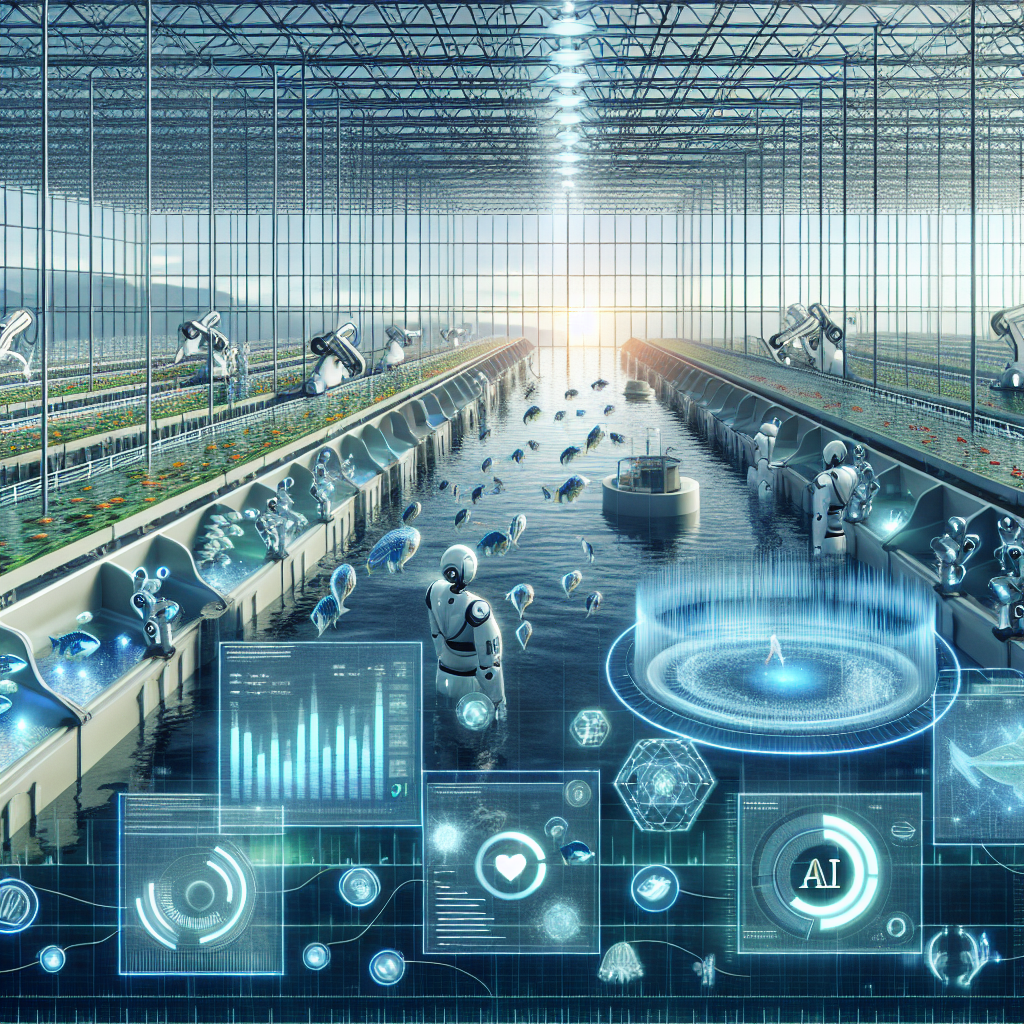In recent years, the use of Artificial Intelligence (AI) in sustainable aquaculture and fisheries management has become increasingly popular. AI technologies offer a wide range of benefits that can help improve efficiency, productivity, and sustainability in the aquaculture and fisheries industries. From monitoring water quality to managing fish stocks, AI has the potential to revolutionize the way we approach aquaculture and fisheries management. In this article, we will explore the benefits of AI in sustainable aquaculture and fisheries management and discuss how these technologies can help address some of the key challenges facing these industries.
Benefits of AI in Sustainable Aquaculture and Fisheries Management
1. Improved Monitoring and Predictive Analytics
One of the key benefits of AI in aquaculture and fisheries management is its ability to provide real-time monitoring and predictive analytics. AI technologies can analyze large amounts of data from sensors, satellites, and other sources to monitor water quality, fish behavior, and environmental conditions. This information can help farmers and fisheries managers make more informed decisions about stocking densities, feeding regimes, and disease prevention. By predicting trends and identifying potential issues before they arise, AI can help reduce risks and improve overall productivity.
2. Precision Farming and Resource Management
AI technologies can also enable precision farming practices in aquaculture, allowing farmers to optimize resource use and minimize waste. By using AI-powered tools to analyze data on water quality, feed consumption, and fish growth, farmers can adjust feeding schedules, water flow rates, and other parameters to maximize efficiency. This not only improves productivity but also reduces the environmental impact of aquaculture operations. By using resources more efficiently, farmers can reduce costs and minimize their footprint on the environment.
3. Disease Detection and Management
Disease outbreaks can have devastating effects on aquaculture and fisheries, leading to significant economic losses and environmental damage. AI technologies can help detect and manage diseases more effectively by analyzing data on water quality, fish behavior, and other factors. By monitoring changes in fish behavior and identifying early signs of disease, AI can help farmers take proactive measures to prevent outbreaks and minimize their impact. AI-powered tools can also help farmers track the spread of diseases and develop targeted treatment strategies to control outbreaks.
4. Stock Assessment and Population Dynamics
Managing fish stocks is a complex task that requires accurate data on population dynamics, growth rates, and reproductive patterns. AI technologies can help fisheries managers collect and analyze this data more efficiently, allowing them to make better-informed decisions about fishing quotas and conservation measures. By using AI-powered models to predict population trends and assess the impacts of fishing activities, fisheries managers can ensure the long-term sustainability of fish stocks and ecosystems. This can help prevent overfishing and protect vulnerable species from extinction.
5. Ecosystem Monitoring and Conservation
AI technologies can also be used to monitor ecosystems and assess the impacts of aquaculture and fishing activities on the environment. By analyzing data on water quality, biodiversity, and habitat degradation, AI can help identify areas of concern and develop conservation strategies to protect vulnerable ecosystems. AI-powered tools can also help monitor the impacts of climate change and other environmental factors on aquatic ecosystems, allowing researchers and policymakers to take proactive measures to mitigate these threats. By using AI to monitor and manage ecosystems, we can ensure the long-term sustainability of aquaculture and fisheries operations.
Frequently Asked Questions (FAQs)
Q: How can AI help improve water quality in aquaculture systems?
A: AI technologies can monitor water quality parameters such as temperature, pH, dissolved oxygen, and nutrient levels in real-time. By analyzing this data, farmers can adjust feeding schedules, water flow rates, and other parameters to maintain optimal conditions for fish growth and health. AI can also help detect and prevent water quality issues such as algal blooms, oxygen depletion, and nutrient pollution, reducing the risk of disease outbreaks and environmental damage.
Q: Can AI help reduce the use of antibiotics in aquaculture?
A: Yes, AI technologies can help farmers reduce the need for antibiotics by improving disease detection and management. By monitoring fish behavior and other indicators of health, AI can help farmers identify early signs of disease and take proactive measures to prevent outbreaks. This can reduce the risk of infections and the need for antibiotics, promoting healthier fish and reducing the risk of antibiotic resistance in aquaculture operations.
Q: How can AI help fisheries managers assess fish stocks and set fishing quotas?
A: AI technologies can analyze data on fish population dynamics, growth rates, and reproductive patterns to assess the health of fish stocks. By using AI-powered models to predict population trends and assess the impacts of fishing activities, fisheries managers can set sustainable fishing quotas and conservation measures. This can help prevent overfishing and ensure the long-term sustainability of fish stocks and ecosystems.
Q: What are some of the challenges and limitations of using AI in aquaculture and fisheries management?
A: While AI technologies offer a wide range of benefits, there are also some challenges and limitations to consider. For example, AI systems rely on accurate and up-to-date data to make informed decisions, so data quality and availability can be a limiting factor. Additionally, AI technologies can be expensive to implement and require specialized expertise to operate effectively. It is important for aquaculture farmers and fisheries managers to carefully consider these factors and develop a clear strategy for integrating AI into their operations.
In conclusion, Artificial Intelligence offers a wide range of benefits for sustainable aquaculture and fisheries management. From improved monitoring and predictive analytics to precision farming practices and disease detection, AI technologies can help address some of the key challenges facing these industries. By using AI to optimize resource use, manage fish stocks, and protect ecosystems, we can ensure the long-term sustainability of aquaculture and fisheries operations. As AI continues to evolve and improve, it will play an increasingly important role in shaping the future of aquaculture and fisheries management.

